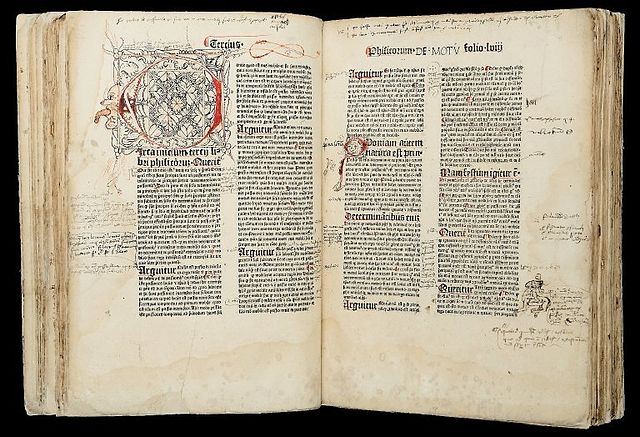Hypnerotomachia Poliphili
Hypnerotomachia Poliphili, called in English Poliphilo's Strife of Love in a Dream or The Dream of Poliphilus, is a book said to be by Francesco Colonna. It is a famous example of an incunable. The work was first published in 1499 in Venice by Aldus Manutius. This first edition has an elegant page layout, with refined woodcut illustrations in an Early Renaissance style. Hypnerotomachia Poliphili presents a mysterious arcane allegory in which the main protagonist, Poliphilo, pursues his love, Polia, through a dreamlike landscape. In the end, he is reconciled with her by the "Fountain of Venus".
First edition
Triumphal Car
The Rape of Europa
Poliphilo from a page of the Hypnerotomachia Poliphili
An incunable or incunabulum is a book, pamphlet, or broadside that was printed in the earliest stages of printing in Europe, up to the year 1500. Incunabula were produced before the printing press became widespread on the continent and are distinct from manuscripts, which are documents written by hand. Some authorities on the history of printing include block books from the same time period as incunabula, whereas others limit the term to works printed using movable type.
Page from Valerius Maximus, Facta et dicta memorabilia, printed in red and black by Peter Schöffer (Mainz, 1471). The page exhibits a rubricated initial letter "U" and decorations, marginalia, and ownership stamps of the "Bibliotheca Gymnasii Altonani" (Hamburg).
Illumination with doodles and drawings (marginalia), including an open-mouthed human profile, with multiple tongues sticking out. Copulata, "De Anima", f. 2a. HMD Collection, WZ 230 M772c 1485
Image of two facing pages from "Phisicorum", fols. 57b and 58a, with doodles and drawings. HMD Collection, WZ 230 M772c 1485
First incunable with illustrations, Ulrich Boner's Der Edelstein, printed by Albrecht Pfister, Bamberg, 1461








